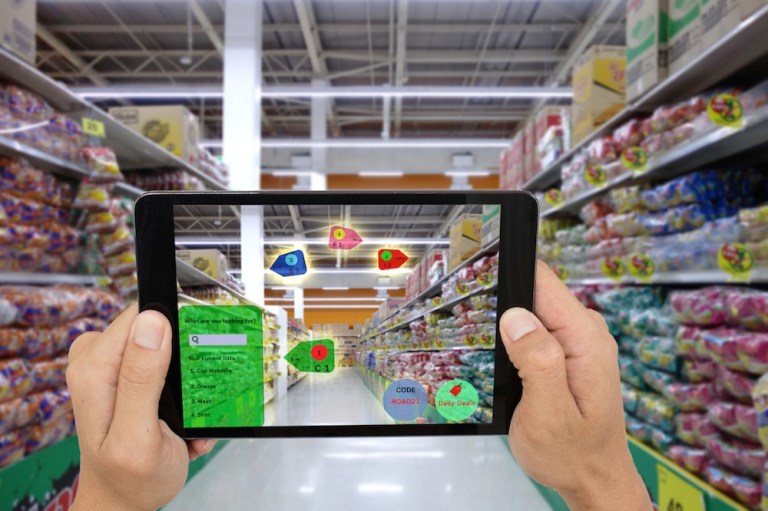Why Every Retailer Needs To Act Like A Software Company

Fleet of foot and fickle of mind, consumers are flocking to retailers — online, and to buy direct. In the latest Data Drivers, EDITED CEO, Geoff Watts, tells Karen Webster retailers must learn to act like software companies and brands become retailers as data-driven direct consumer interaction emerges as a macro trend. Three data points tell the story.
Data, data everywhere. But how to separate the wheat from the chaff? The gem of insight that drives retail sales?
The data is out there – but bad data is worse than no data. And sometimes it’s hard to discern the good from the bad.
“It’s kind of like anything else in life,” said Geoff Watts, CEO of EDITED, who mused to PYMNTS’ Karen Webster that “you need to put trust in the organizations that have proven themselves a little bit … it is important to understand the province of the data, understand where it came from and whether you can trust where it came from.”
Despite best efforts, he said in the latest Data Drivers installment, consider the fact that there will always be errors – right down to the mistakes that say a consumer was born in a different city, or in the wrong year. Then there’s the data, writ large, that says a particular sweater will fly off the shelves, only to have it sit there, leaden as wet wool, as markdowns beckon.
But in the quest to tell a story from the data, and especially in retail, the sins can be ones of omission – or perhaps not seeing the forest for the trees. If a company is growing extremely quickly, said Watts, those steering the firm might be branded outright geniuses. Or maybe they are just riding the wave of a popular trend.
Data Point Number One: 37 Percent
The data shows that 37 percent of U.S. apparel products are now discounted, and rather steeply discounted at that – by an average of 40 percent. Significant numbers, to be sure. But then again, as Watts noted, there are “a hell of a lot of retailers, one hell of a lot of production and a heck of a lot of discounting strategies as well.”
But there might be a retailer – say, for instance, JCPenney – that is promotionally driven, and that knows discounts are what drives their consumers. Then there are luxury items that might retail for $1,000, with discounts cumulatively bringing the price down by 70 percent. A disaster has taken place – and, in addition, as Webster noted, the U.S. consumer has been conditioned to wait for sales to commence. Indeed, expectations of the brand itself set into motion certain consumer behaviors, said Watts. (Apple, to give an anti-discount example, doesn’t really do fire sales, if you’ve noticed.)
Data Point Number Two: 36.6 Percent
Maybe a new game is afoot when it comes to footwear. We’re talking sneakers. The year-on-year-on-year increase in product – the cool stuff that all the kids are wearing, and no small number of adults as well – was up more than 36 percent from 2016 to 2017.
Might this suggest that people are snapping up footwear at the expense of other items?
Could be, said Watts. He noted a Washington Post article that focused on the fact that people are abandoning heels. And as formal wear might go by the wayside, sneakers have gained, and continue to gain, stature and cachet.
“And also,” he reminded Webster, “fitness is a real thing. People are wearing watches and Fitbits and monitoring their steps … ” And there also is planned obsolescence, which keeps demand up for the new thing.
Interesting fact about heels, noted Webster, where sales have dropped 12 percent:
Discounting has been less than commensurate. A variety of factors may be at work, said Watts, where people are willing to pay less if they do not perceive the quality to be high (that is not the case here, by the way). Denim has seen some of the hallmarks of pressure, and across different retail models, such as subscription.
Data Point Number Three: 30 Percent
This is the percentage of Nike’s retail product that is on track to be sold through their own channels rather than through other channels by the year 2022, said Webster.
Think of a brand like Everlane, where the focus has been on the internet. The thing that has been interesting about the brand is that they interact directly – and transact directly with – their consumers.
“This is a macro trend,” said Watts. “Quite often, when you type a brand name into Google you go and interact with the brand.”
Apple is a prime example where 40 percent of the merchandise gets sold direct from Apple, and through Apple stores.
Even food retailers have gotten into the act, interfacing with their clientele through humorous Twitter feeds.
Amid all this change, then, more data is needed (perhaps no surprise) and “every brand, every retailer needs to become a software company,” according to Watts.
The data? There is a science to it, said Watts, though the science is very high category. To note trends, note the circumstances – and the nuances, where such attention to detail is more art than science. Production may not have been calibrated correctly (too low?) to measure demand. “There are all sorts of things that affect the industry,” he said, “and they can be very small, where retailers focus on individual cities and, say, trends that emerge in New York or L.A. or London.”
Thus, the data-driven, direct model – or the more direct model. Perhaps not the newest thing under the sun. As Watts noted, the direct consumer interaction could be seen on a daily basis 100 years ago, through the department store model.
Aided by the software and the data points, the art and the science, “My thesis is that every brand needs to become a retailer,” said Watts.